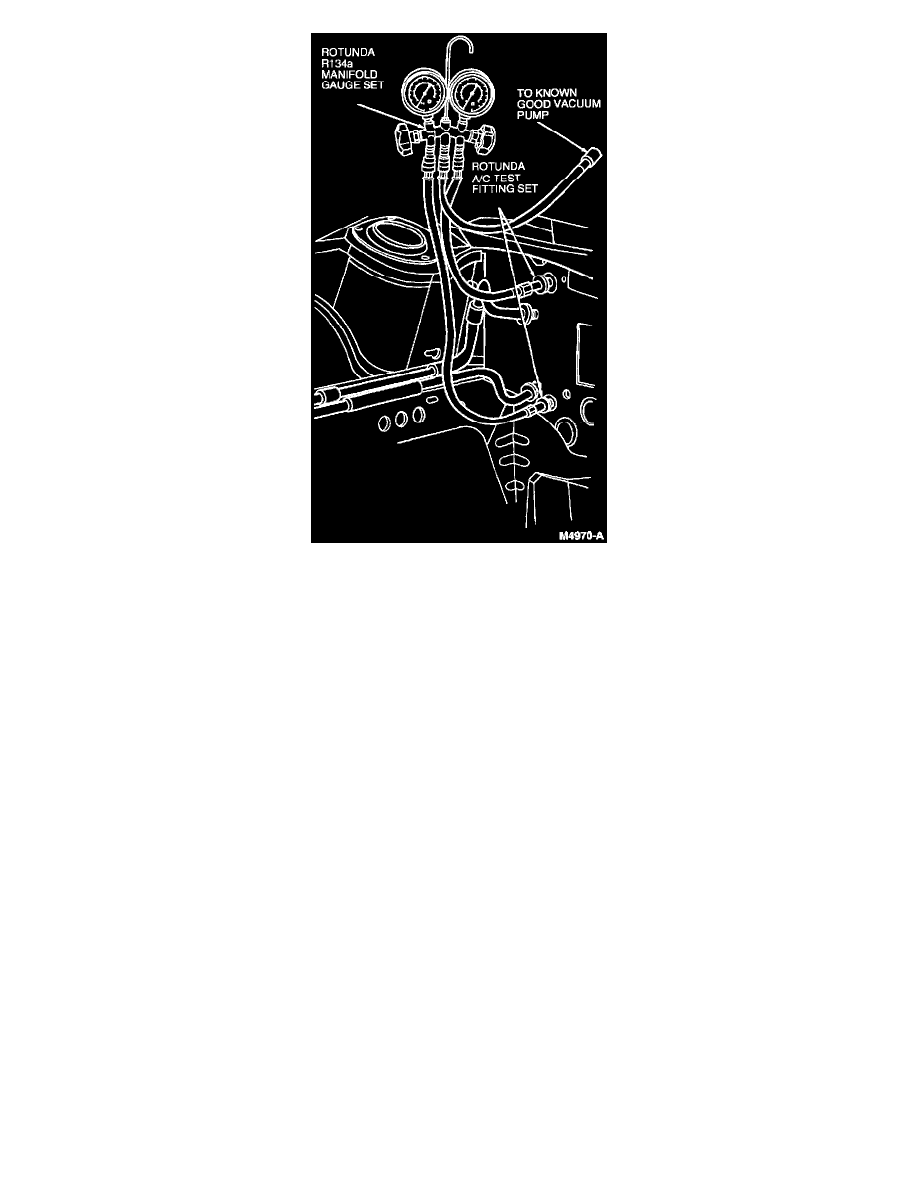Sable V6-3.0L VIN U (1999)

6. Connect the red and blue hoses from the manifold gauge set to the test fittings on the A/C evaporator core or A/C condenser core. Connect the
yellow hose to a known good vacuum pump.
NOTE: The automatic shut-off valves on some gauge set hoses do not open when connected to the test fittings. If available, use hoses without
shut-off valves. If hoses with shut-off valves are used, make sure the valve opens when attached to the test fittings or install an adaptor which
will activate the valve. The test is not valid if the shut-off valve does not open.
7. Open both gauge set valves and start the vacuum pump. Turn the A/C system blower on low and allow the vacuum pump to operate for a
minimum of 45 minutes after the gauge set low pressure gauge indicates 101 kPa (30 in-Hg). The 45 minute evacuation is necessary to
remove any refrigerant from oil left in the A/C evaporator core or A/C condenser core. If the refrigerant is not completely removed from the
oil, outgassing will occur. This will degrade the vacuum and appear as a refrigerant leak.
8. If the low pressure gauge reading will not drop to 101 kPa (30 in-Hg) when the valves on the gauge and manifold set are open and the vacuum
pump is operating, close the gauge set valves and observe the low pressure gauge. If the pressure rises rapidly to zero, a large leak is indicated.
Recheck the fittings and repeat the test before replacing the A/C evaporator core or A/C condenser core.
-
If the low pressure gauge reading rises 34 or more kPa (10 or more in-Hg) of vacuum from the 101 kPa (30 in-Hg) position in 10 minutes,
a leak is indicated.
-
If a very small leak is suspected, wait 30 minutes and observe the vacuum gauge.
-
If a small amount of vacuum is lost, operate the vacuum pump with gauge valves open or an additional 30 minutes with the system blower
on low to remove any remaining refrigerant from the oil in the A/C evaporator core or A/C condenser core. Then, recheck for loss of
vacuum.
-
If a very small leak is suspected, allow the system to set overnight with vacuum applied and check for vacuum loss.
9. If the A/C evaporator core or A/C condenser core does leak, as verified by the above procedure, install a new A/C evaporator core and/or A/C
condenser core.
